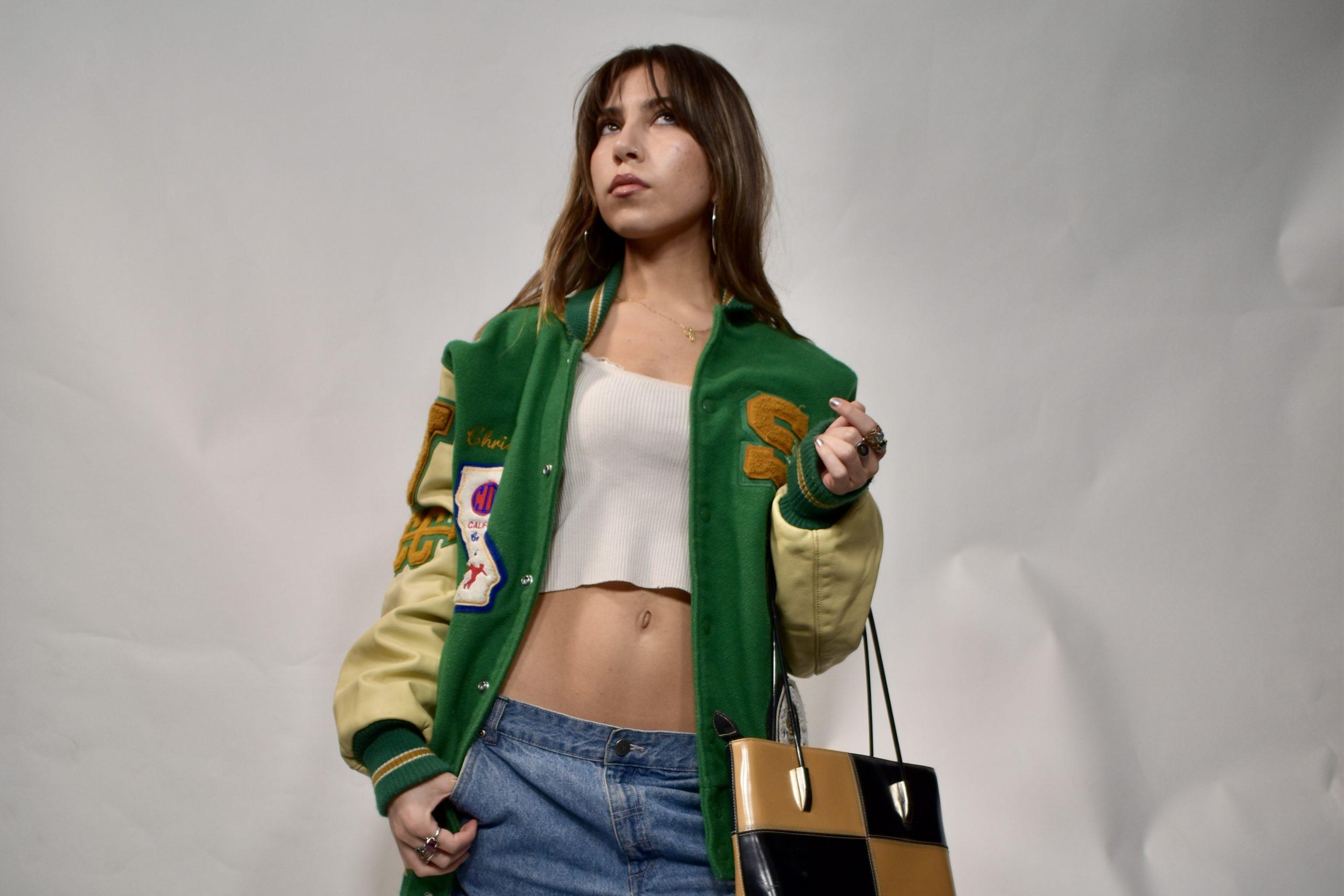In a myriad of locations, a teenage girl enthusiastically sifts through a bag of her mother’s vintage clothing from the early 2000s. She marvels at intricately beaded dresses and well-worn sweatshirts adorned with sorority letters.
Among the treasures, she discovers a pair of denim overalls, which she proudly selects as her prized possession.
When she wears the overalls out, she receives a compliment on them.
“Thank you,” she responds. “They’re vintage.”
Her mother is taken aback. Vintage? The early 2000s don’t seem that distant, especially since she is not yet 40.
Despite the skepticism from Generation X and some older Millennials, “Vintage: A Guide to Buying, Wearing, and Caring for Secondhand Clothing” by David Cook and David Walters explains that clothing becomes vintage when it reaches anywhere between 20 and 100 years old.
The allure of nostalgia drives vintage shoppers to scour thrift stores for ‘90s denim and prompts celebrity stylists to select archival designer pieces for red-carpet events.
Whether the choice to embrace vintage fashion stems from a fondness for the past or a quest for a distinctive personal style, Pepperdine students are curating wardrobes filled with pieces that once held significance in another era.
“These garments have a history,” senior Ryan Rooke remarked. “They’ve witnessed both hardships and joy. They carry a soul and a spirit within them, preserving fragments of a bygone era.”
Age Before Beauty
Junior Steven Cordova views vintage shopping as a means to acquire higher-quality clothing compared to contemporary pieces, allowing him to express his unique style by discovering one-of-a-kind items.
Recalling his upbringing, Cordova realized that he often disliked the clothes he purchased because he followed trends instead of staying true to his individual taste.
“In high school, I adopted the mantra, ‘Wear your clothes, don’t let your clothes wear you,’” Cordova shared. “I was swayed by trends instead of honoring my authentic self. My advice to those venturing into vintage shopping is to ignore trends and outside influences, and instead, embrace your personal style.”
In the realm of fashion, taste reflects personal preferences. While everyone possesses taste, it is one’s style that enables them to express themselves through clothing.
Cordova pointed out that although many modern clothing items align with his taste, they may not always resonate with his personal style.
“It’s essential for individuals to discern between style and taste,” Cordova emphasized. “By understanding the distinction between the two, one can develop a deeper appreciation for the process of hunting for vintage treasures.”
Junior Anna Stephens opts for vintage clothing due to its superior quality, unique style, and the positive environmental impact of sustainable shopping practices.
As a Stephens favors vintage over contemporary secondhand clothing, citing its longevity and durability.
“Vintage apparel boasts higher quality compared to recent secondhand pieces,” Stephens explained. “Today, fast fashion items often end up in thrift stores after a short lifespan. While I could opt for these items, I prefer investing in vintage pieces for their enduring quality.”
For instance, Cordova cherishes a vintage T-shirt from Beyoncé’s “The Beyoncé Experience” tour, promoting her B’Day album released in 2006, as it holds sentimental value from his childhood.
Finding a Needle in a Haystack
Stephens and Cordova both recommend stores with curated selections for successful vintage finds, with Stephens highlighting “Love at Second Sight” in Westlake Village. Conversely, senior Sofia Thure prefers discovering gems at secondhand shops like Goodwill and The Salvation Army.
Thure’s selection process involves assessing color, material quality, and garment labels to gauge durability before considering the item’s functionality and versatility in her wardrobe.
While locating authentic vintage pieces at thrift stores demands time and effort, Thure finds the pursuit rewarding, dedicating entire days to meticulously combing through racks to uncover hidden treasures.
Junior Angelina Arevalos distinguishes between vintage and thrift shopping based on how items are sourced and displayed. She associates vintage shopping with high-end, hand-picked pieces from retailers, while thrift shopping involves donation-based stores.
Arevalos frequents flea markets in search of vintage clothing, noting the affordability and unique finds available at such venues.
Curating a vintage wardrobe has not only enriched Arevalos’ fashion sense but also instilled an appreciation for the evolution of style. She values the individuality and personal touch that vintage pieces bring to her wardrobe.
Thure’s collection boasts a variety of unique pieces, including durable overalls, a retro halter top, and an intricately embroidered vest, all acquired from thrift and vintage stores.
Embracing vintage fashion allows Thure to stand out with one-of-a-kind pieces that reflect her personal style and taste, emphasizing the allure of individuality in vintage shopping.
